Shivesh Jadon
Augmented Conversation with Embedded Speech-Driven On-the-Fly Referencing in AR
May 28, 2024
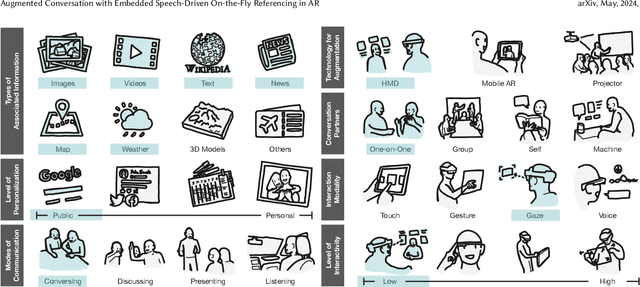
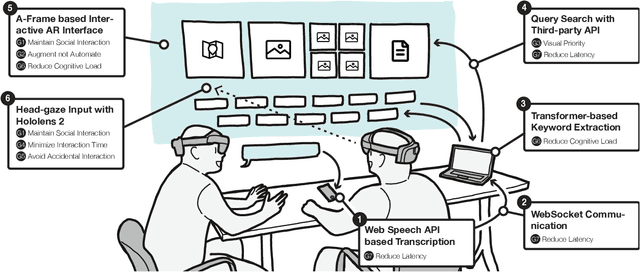
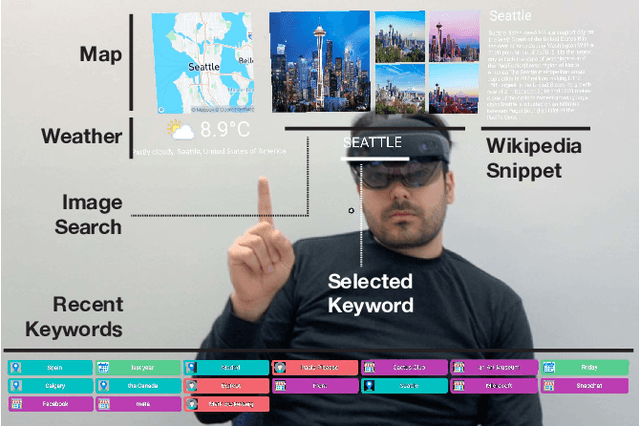
Abstract:This paper introduces the concept of augmented conversation, which aims to support co-located in-person conversations via embedded speech-driven on-the-fly referencing in augmented reality (AR). Today computing technologies like smartphones allow quick access to a variety of references during the conversation. However, these tools often create distractions, reducing eye contact and forcing users to focus their attention on phone screens and manually enter keywords to access relevant information. In contrast, AR-based on-the-fly referencing provides relevant visual references in real-time, based on keywords extracted automatically from the spoken conversation. By embedding these visual references in AR around the conversation partner, augmented conversation reduces distraction and friction, allowing users to maintain eye contact and supporting more natural social interactions. To demonstrate this concept, we developed \system, a Hololens-based interface that leverages real-time speech recognition, natural language processing and gaze-based interactions for on-the-fly embedded visual referencing. In this paper, we explore the design space of visual referencing for conversations, and describe our our implementation -- building on seven design guidelines identified through a user-centered design process. An initial user study confirms that our system decreases distraction and friction in conversations compared to smartphone searches, while providing highly useful and relevant information.
RealitySummary: On-Demand Mixed Reality Document Enhancement using Large Language Models
May 28, 2024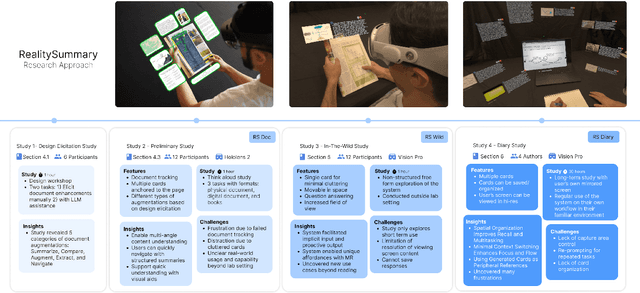
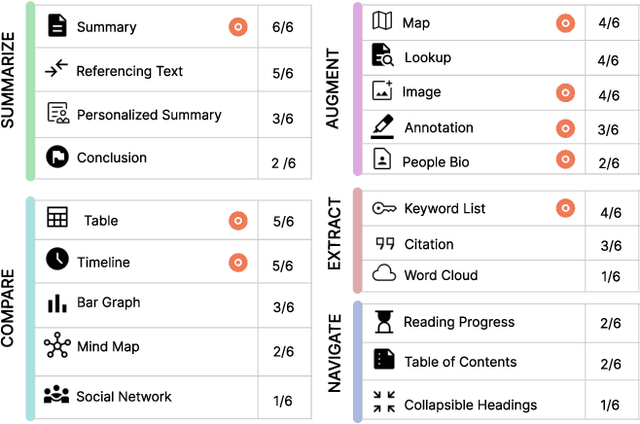


Abstract:We introduce RealitySummary, a mixed reality reading assistant that can enhance any printed or digital document using on-demand text extraction, summarization, and augmentation. While augmented reading tools promise to enhance physical reading experiences with overlaid digital content, prior systems have typically required pre-processed documents, which limits their generalizability and real-world use cases. In this paper, we explore on-demand document augmentation by leveraging large language models. To understand generalizable techniques for diverse documents, we first conducted an exploratory design study which identified five categories of document enhancements (summarization, augmentation, navigation, comparison, and extraction). Based on this, we developed a proof-of-concept system that can automatically extract and summarize text using Google Cloud OCR and GPT-4, then embed information around documents using a Microsoft Hololens 2 and Apple Vision Pro. We demonstrate real-time examples of six specific document augmentations: 1) summaries, 2) comparison tables, 3) timelines, 4) keyword lists, 5) summary highlighting, and 6) information cards. Results from a usability study (N=12) and in-the-wild study (N=11) highlight the potential benefits of on-demand MR document enhancement and opportunities for future research.
RealityTalk: Real-Time Speech-Driven Augmented Presentation for AR Live Storytelling
Aug 12, 2022



Abstract:We present RealityTalk, a system that augments real-time live presentations with speech-driven interactive virtual elements. Augmented presentations leverage embedded visuals and animation for engaging and expressive storytelling. However, existing tools for live presentations often lack interactivity and improvisation, while creating such effects in video editing tools require significant time and expertise. RealityTalk enables users to create live augmented presentations with real-time speech-driven interactions. The user can interactively prompt, move, and manipulate graphical elements through real-time speech and supporting modalities. Based on our analysis of 177 existing video-edited augmented presentations, we propose a novel set of interaction techniques and then incorporated them into RealityTalk. We evaluate our tool from a presenter's perspective to demonstrate the effectiveness of our system.
 Add to Chrome
Add to Chrome Add to Firefox
Add to Firefox Add to Edge
Add to Edge